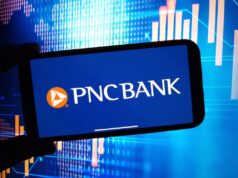In a landmark $1.25 billion acquisition, Ripple has secured Hidden Road, a premier multi-asset prime brokerage firm, clearing over $3 trillion in trades annually. This deal marks an unprecedented strategic pivot for the crypto-native giant. It catapults the company into the institutional finance realm and positions Ripple as a direct challenger to legacy financial institutions.
A Strategic Leap into Institutional Finance
Ripple’s acquisition of Hidden Road signals a significant transformation in its business model. Traditionally known for its blockchain-based payment solutions and digital asset initiatives, Ripple is now poised to extend its operational footprint into the traditional brokerage domain. Hidden Road’s established infrastructure caters to over 300 institutional clients across diverse asset classes including FX, digital assets, and derivatives. This merger furnishes Ripple with capabilities that bridge decentralized finance (DeFi) and traditional finance (TradFi).
Hidden Road: A Robust Institutional Backbone
Hidden Road has built its reputation by processing a staggering volume of transactions, with annual clearances totaling around $3 trillion. The firm’s expertise in prime brokerage and its comprehensive service offerings have made it a trusted partner for institutional investors. Integrating these services under Ripple’s umbrella will enhance the operational scale and enrich the range of services Ripple can offer, from order execution to post-trade processing.
Amplifying RLUSD Utility
Bolstering Ripple’s USD-backed stablecoin, RLUSD, is one of the acquisition’s key components. Hidden Road already utilizes RLUSD as collateral within its suite of brokerage products. This move can further integrate RLUSD into mainstream financial operations. By leveraging this stablecoin in cross-margining and collateralization frameworks, Ripple aims to improve its competitive positioning against other leading stablecoins in an increasingly crowded market.
Bridging TradFi and DeFi
Ripple’s bold move comes at a time when the boundaries between decentralized finance and conventional banking are becoming increasingly blurred. Hence, the acquisition represents more than a mere expansion. It is a clear statement that digital asset firms are now prepared to offer the comprehensive, cross-asset services traditionally reserved for established financial institutions. With Hidden Road’s infrastructure, Ripple is set to become a formidable contender in the institutional finance space, offering a blend of cutting-edge blockchain technology and conventional brokerage expertise.
Looking Ahead
As regulatory clarity continues to improve in key markets, Ripple’s acquisition of Hidden Road is also viewed as a response to the evolving financial landscape. Institutional players are just beginning to embrace digital assets as a core component of their portfolios. The deal is pending final regulatory approvals and is anticipated to close in the coming months. Industry watchers are keenly observing how this integration might redefine market dynamics and influence the future trajectory of blockchain-driven financial innovation.
Ripple’s integration of Hidden Road augments its service offering and cements its position as a pioneer in merging blockchain innovations with institutional-grade financial services. For an industry eager to see crypto not merely as an experimental asset class but as an essential component of global finance infrastructure, this acquisition is a significant milestone that could accelerate the ongoing convergence of traditional and digital finance.
Readers’ frequently asked questions
What are the key operational differences between Hidden Road’s service offerings and Ripple’s existing business model?
Hidden Road operates as a multi-asset prime brokerage firm. It provides services such as order execution, risk management, collateral management, and post-trade settlement for various asset classes, including foreign exchange, derivatives, and digital assets. It processes approximately $3 trillion in transactions annually and serves over 300 institutional clients. By contrast, Ripple has primarily focused on blockchain-based payment solutions. It developed the XRP Ledger, which facilitates cross-border payments and digital asset transactions. The acquisition of Hidden Road integrates these established financial services into Ripple’s portfolio. It expands Ripple’s operational capability to encompass both traditional brokerage functions and blockchain technology.
What is RLUSD, and what role does it play in the Hidden Road acquisition?
RLUSD is Ripple’s stablecoin pegged to the U.S. dollar and is designed to maintain a stable value to support high-volume, institutional trading. In the context of the acquisition, Hidden Road already uses RLUSD as collateral within some of its brokerage products. This integration enhances RLUSD’s function by embedding it directly into established financial operations. It links digital asset transactions with traditional collateral management practices.
What regulatory approvals does Ripple need to finalize the Hidden Road acquisition?
The acquisition of Hidden Road is subject to final regulatory approvals, as noted in official communications and public press releases related to the deal. Ripple has indicated that completing the transaction requires clearance from the relevant financial regulatory authorities. The available sources do not provide further details on the specific regulatory bodies involved. However, they emphasize that the approval process is a standard requirement for such a significant financial transaction.
What Is In It For You? Action Items You Might Want to Consider
Keep a close watch on Ripple’s official communications and regulatory updates surrounding the acquisition
Stay informed about key milestones, such as final regulatory approvals and updates on the integration timeline. This can help you better anticipate market reactions that may influence XRP and RLUSD performance.
Monitor the trading volumes and liquidity metrics of RLUSD across major exchanges
Since RLUSD is being integrated as collateral in established brokerage products, any significant changes in its usage and liquidity could signal shifts in market dynamics. These signals can offer practical information for timing stablecoin-related trades or hedging strategies.
Track institutional market engagement indicators and broader sentiment on the XRP Ledger
Ripple is expanding its institutional footprint by bridging traditional brokerage services with blockchain technology. Investors can observe trends in institutional flows or sentiment changes on platforms connected to XRP. Changes in sentiment may offer valuable signals to refine your trading approach.











[…] >>> Read more: Ripple Hidden Road Acquisition: A Strategic Shift […]
[…] >>> Read more: Ripple Hidden Road Acquisition: A Strategic Shift […]
[…] >>> Read more: Ripple Hidden Road Acquisition: A Strategic Shift […]
[…] cost the company roughly $4 billion in disclosed and estimated transactions. Earlier deals included Hidden Road (prime brokerage, ≈ $1.25 billion), Rail (stablecoin infrastructure, ≈ $200 million), and […]